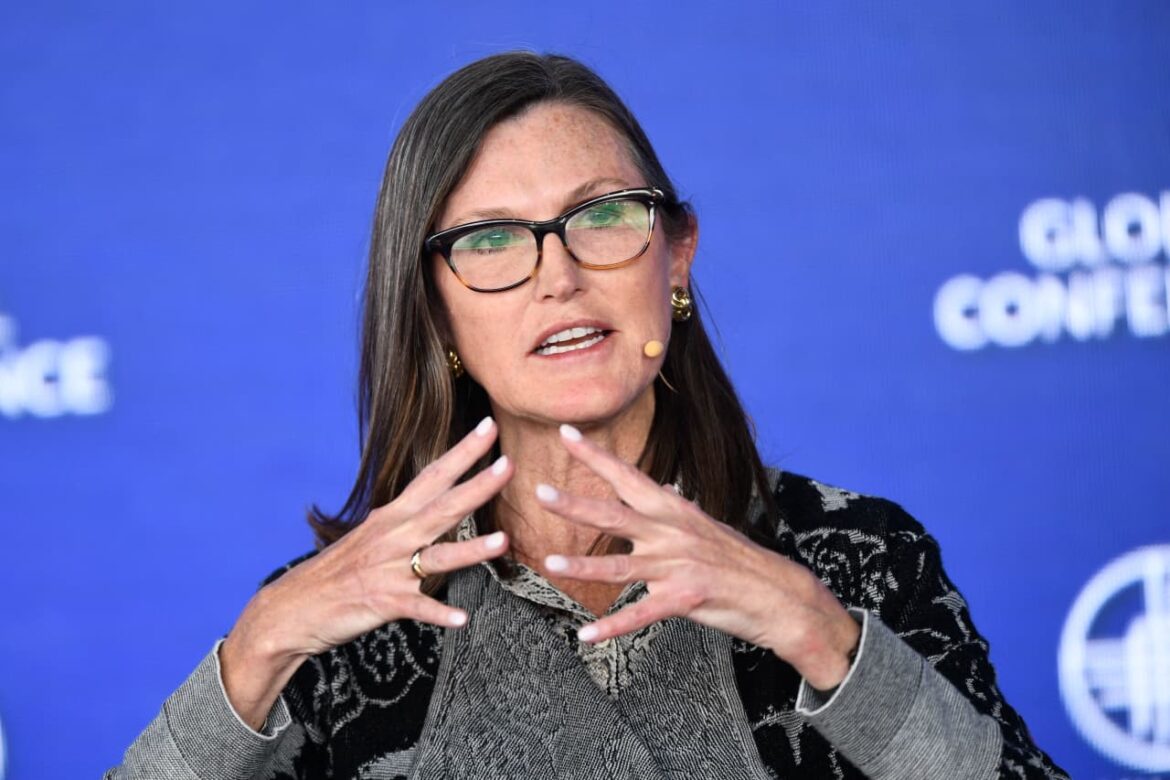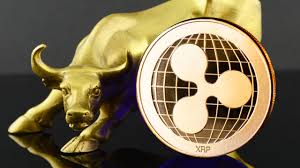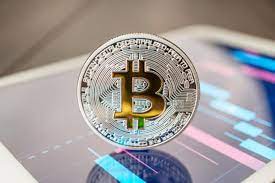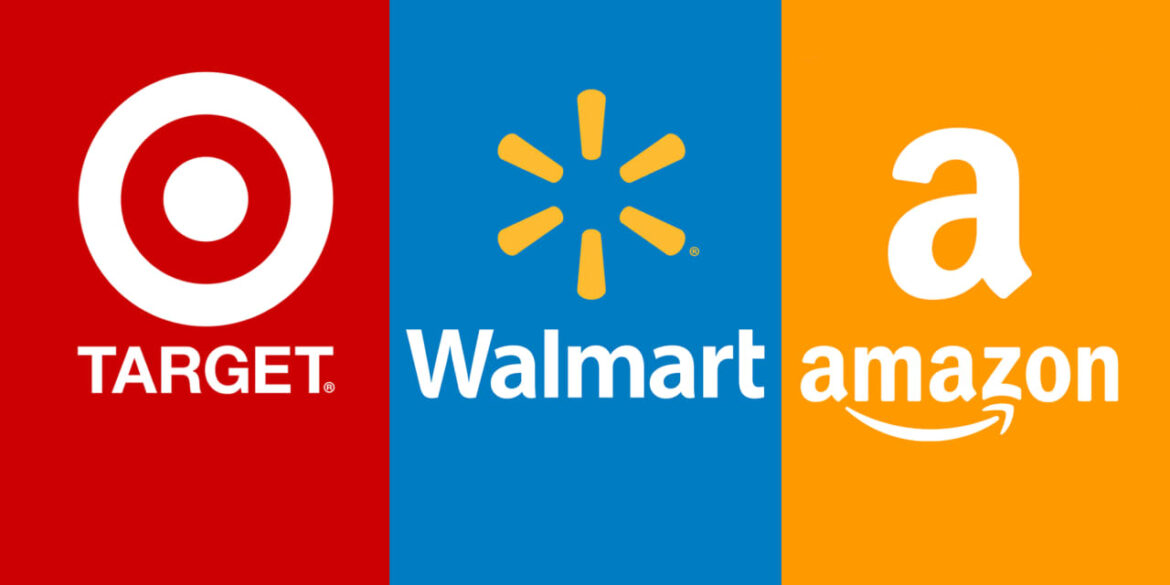
Wood has been a bull of Tesla for a long time.
Source link
target
Crypto Analyst Predicts 600%-1000% Return For XRP, Here’s The Target
A cryptocurrency analyst has predicted a massive price surge for XRP, anticipating the cryptocurrency to witness a more than 600% increase. Despite its historically sluggish growth, XRP has begun to gather momentum, showing potential to experience major price growth during the 2024 bull run.
Price Projected To Soar Above $5
A crypto analyst identified as Egrag Crypto has taken to X (formerly Twitter) to predict an exponential price surge for XRP. According to Egrag Crypto XRP is “guaranteed” to experience a 600% to 1000% increase to new all-time highs around $5.5.
Basing his predictions on XRP’s historical data from 2017, the analyst shared a chart illustrating XRP’s price movements over the years. He delved into the cryptocurrency’s minimum and shortest price pumps observed when the 21 Exponential Moving Average (EMA) crosses the 55 Moving Average (MA).
The crypto expert disclosed that in 2017, the altcoin witnessed a significant price surge of approximately 902.85%, driving its price to $0.0646 at the time. Around 2021, the cryptocurrency recorded another pump, surging by about 585.29% to trade above the $1 price mark.
Following historical trends, XRP is anticipated to undergo a substantial surge of 585.20%, reaching a price level of about $3.26 in 2024. The analyst has revealed that if XRP manages to achieve a 900% or 585% price pump, it could potentially rise even further to $5.5 or $4, respectively.
On the flip side, Egrag Crypto has disclosed that if XRP fails to achieve an all-time high of $5 to $10 during the 2024 bull cycle, the cryptocurrency may not experience a bullish surge until the next bull run. Despite this, the analyst has remained confident in XRP’s potential to attain triple-digit gains and reach new all-time highs soon.
When Will XRP Witness A $5.5 Price Surge?
When asked by a crypto community member about the timeline for the price of XRP to potentially rise to $5.5, Egrag Crypto boldly affirmed that the window of uptick lies between April and July 2024. He urged the XRP army to brace themselves for this potentially bullish period, emphasizing a strong belief for XRP to surge to unprecedented heights.
Despite its recent price drops, the sentiment surrounding XRP has remained positive, with many crypto analysts predicting bullish price movements for the cryptocurrency. At the time of writing, XRP is trading around $0.61, reflecting a decline of 1.77% over the last 24 hours and 3.93% over the past week, according to CoinMarketCap.
While the cryptocurrency has successfully crossed resistance levels above $0.5, it is still a long way from surpassing its all-time high of $3.84 recorded in 2018.
Token price trending at $0.62 | Source: XRPUSDT on Tradingview.com
Featured image from Bitcoin News, chart from Tradingview.com
Disclaimer: The article is provided for educational purposes only. It does not represent the opinions of NewsBTC on whether to buy, sell or hold any investments and naturally investing carries risks. You are advised to conduct your own research before making any investment decisions. Use information provided on this website entirely at your own risk.
Chainlink (LINK) has performed strongly over the past week, with the token’s price increasing 21.3% in the last seven days. Some analysts have shared their predictions and thoughts on LINK, suggesting keeping an eye on the token and its long-term performance.
What Is LINK’s Next Steppingstone?
Recently, Chainlink announced its partnership with blockchain platform Avalanche and the Australia and New Zealand Banking Group to connect the Avalanche and Ethereum blockchains using Chainlink’s Cross-Chain Interoperability Protocol (CCIP).
As reported by NewsBTC, the partnership aims to facilitate the “access, trade, and seamless settlement of tokenized assets across networks in different currencies in a process called Delivery vs. Payment (DvP).”
The crypto community appeared to receive the news well. X users expressed their positive sentiments towards the collaboration and Chainlink’s token. The sentiment has seemingly translated to LINK’s performance, as the token’s price soared 9% in the last 24 hours.
Crypto analyst and trader The Lord of Entry shared his prediction for LINK. In the X post, the trader highlights that the token’s performance in the past day had been strong as it broke above the $18.5 resistance level. Chainlink’s LINK unsuccessfully tested the resistance zone over the past week after falling below it on March 18.
$LINK 4hr – #LINK has been strong today, but now banging into some resistance – if it can flip this into support your next big target is around 28#LINKusdt pic.twitter.com/YlCDRDOFTq
— @TheLordofEntry (@thelordofentry) March 26, 2024
The token continued the upward trajectory throughout the day after successfully rising above the $18.5 price. In the early hours of Tuesday, LINK surged above the $20 mark but faced resistance near the $20.5 range.
According to the trader, if the token can break above this level and turn it into a support zone, the next big target for LINK would be the $28 price range.
As of this writing, LINK tested this new resistance level, which has been rising above it twice in the past hour. The token reached $20.6 in the first attempt and briefly surpassed the $20.7 price range during the second attempt. However, the token momentarily failed to flip the resistance zone and fell below $20.5 again.
Chainlink’s “Very Strong” Long-Term Performance
Despite the failed attempts, LINK’s price surged 9% in the past 24 hours. Interest in the token has seemingly risen in the same timeframe as its market activity increased by 55.19%, reaching a daily trading volume of $539.9 million.
Its market capitalization also increased by 8.16% in the past day, reaching $12.02 billion. Chainlink is the 14th-largest cryptocurrency by this metric, according to CoinMarketCap data.
Moreover, LINK has shown a remarkable 182.6% performance in the last year. As a result, crypto analyst Altcoin Sherpa shared some notes on LINK, suggesting that it shouldn’t be actively traded. Sherpa stated that the token is a better fit to “buy and hold” as it is a “safe coin that is going to do strong numbers.”
$LINK: A few notes w. this one-
-you shouldn’t be actively trading this. Loads more volatile coins (though this has nice liquidity)
-Better to buy and hold, this is a safe coin that is going to do strong numbers
-Still fundamentally v. strong, 1 of the best.
-still expecting… pic.twitter.com/NeJAm2ixXj
— Altcoin Sherpa (@AltcoinSherpa) March 25, 2024
The analyst considers LINK fundamentally “very strong” and one of the best tokens based on its long-term performance. Ultimately, Sherpa predicts the price will “consolidate for a bit longer before its next move.”
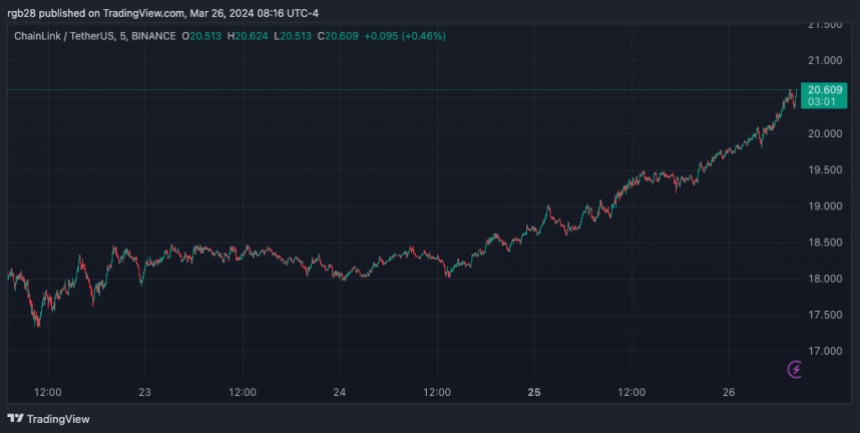
Chainlink hits $20.6 in the 3-day chart chart. Source: LINKUSDT on Trading.view.com
Featured Image from Unsplash.com, Chart from TradingView.com
Disclaimer: The article is provided for educational purposes only. It does not represent the opinions of NewsBTC on whether to buy, sell or hold any investments and naturally investing carries risks. You are advised to conduct your own research before making any investment decisions. Use information provided on this website entirely at your own risk.
Bernstein Analysts Says Bitcoin Will Reach A New ATH By Year End, Here’s The Target
Analysts at financial services firm Bernstein are increasing their price expectations for Bitcoin. This follows a revised report in which they boosted their year-end target for the flagship crypto token’s price.
Bitcoin To Hit $90,000 By The End Of 2024
According to a report by CoinDesk, Bernstein analysts Gautam Chhugani and Mahika Sapra have raised their year-end prediction for Bitcoin’s price from $80,000 to $90,000. Their research report cited the strong Spot Bitcoin ETF inflow and a record mining income as the reasons for this increased bullishness on BTC’s price.
Since launching, the Spot Bitcoin ETFs have recorded an impressive amount of inflows into their funds and have significantly contributed to an increase in BTC’s price. As such, it is understandable why these analysts believe they could still positively impact Bitcoin’s price in the long run.
Despite miners’ rewards being cut in half during the Halving event in mid-April, these Bernstein analysts also foresee a record mining income for BTC miners. They believe this would have a positive impact on BTC’s price. Bitcoinist recently reported that Bitcoin Halving could force some miners out of business, paving the way for the remaining miners to enjoy increased revenue.
Meanwhile, Chhugani and Sapra also recently reaffirmed their prediction that Bitcoin will hit $150,000 by mid-2025. They believe that the Spot Bitcoin ETFs will be one of many factors contributing to this massive price surge.
BTC Could Even Hit $150,000 This Year
Standard Chartered is another financial institution that revised its year-end target for Bitcoin’s price. As against their initial prediction of $100,000, they recently stated that Bitcoin could rise to $150,000 by the end of this year. Like Bernstein, Standard Chartered also alluded to the influence of the Bitcoin ETFs as the primary reason for their bullishness on Bitcoin.
The bank noted in the research report that these investment funds provide a more robust and sustainable positioning for Bitcoin, unlike when the crypto token hit new highs solely based on speculations. Standard Chartered also predicts that BTC could rise to $200,000 by the end of 2025.
Interstingly, they added that an “overshoot to $250,000 is likely at some point in 2025 if ETF inflows continue apace and reserve managers buy BTC.” These predictions, however, look conservative when one considers Samson Mow’s prediction that BTC could hit $1 million this year.
At the time of writing, Bitcoin is trading at around $66,200, down over 1% in the last 24 hours, according to data from CoinMarketCap.
BTC bears reclaim control of price | Source: BTCUSD on Tradingview.com
Featured image from Yahoo Finance, chart from Tradingview.com
Disclaimer: The article is provided for educational purposes only. It does not represent the opinions of NewsBTC on whether to buy, sell or hold any investments and naturally investing carries risks. You are advised to conduct your own research before making any investment decisions. Use information provided on this website entirely at your own risk.
Predicting Bitcoin’s Bull Run Values: Plan B’s S2F Model and Ledn CIO’s $92,000 Target
 As bitcoin hovers around the $67,000 mark on March 18, 2024, there’s still widespread speculation about the potential for its price to climb even higher. The analyst Plan B continues to shed light on his well-known stock-to-flow (S2F) model, which suggests that “exponential growth” is expected to “continue.” Plan B: ‘S2F = Exponential Growth’ The […]
As bitcoin hovers around the $67,000 mark on March 18, 2024, there’s still widespread speculation about the potential for its price to climb even higher. The analyst Plan B continues to shed light on his well-known stock-to-flow (S2F) model, which suggests that “exponential growth” is expected to “continue.” Plan B: ‘S2F = Exponential Growth’ The […]
Source link
1 Wall Street Analyst Just Cut Its Nio Price Target by 27%. Is It a Sell?
Investment bank Bernstein has never been a huge fan of Chinese electric car company Nio (NIO 0.52%). Bernstein’s latest move on the EV stock, however, looks downright pessimistic.
Since initiating coverage of Nio stock back in 2021, Bernstein has commented on Nio’s valuation nearly a dozen times, according to data from TipRanks.com. Each time, the banker recommended that investors hold the stock. (Word to the Foolish: On always-optimistic Wall Street, when an analyst tells you a stock is a “hold,” you are best advised to translate that as meaning: “don’t necessarily sell, but definitely don’t buy”).
On Thursday, however, Bernstein did something a little bit different.
Is Nio stock a sell?
Reiterating her hold rating on Nio, Bernstein analyst Eunice Lee slashed her price target on the Chinese automaker by a whopping 27%, from $7.50 per share to just $5.50. The stock, trading at $5.74 a share, is already near that new target.
Some of the reasons for this price target cut were obvious. A putative growth stock, Nio’s Q4 sales actually inched up only 3.6% year over year, and the company lost $789 million. (Nio has, by the way, never earned a profit). What’s really concerning in Lee’s note, however, is her observation that the company’s market share in electric vehicles has fallen by more than half since it first set up shop, skidding from 5% in early 2021 to just 2% in recent months, despite Nio more than doubling the number of EV car models it produces (from three to eight).
With sales stalled, profits nonexistent, competitors getting stronger, and its own market share vanishing, Nio’s future seems uncertain in the extreme. The only real question now is: When will Lee admit that Nio stock is no longer a hold, but actually a sell?
Rich Smith has no position in any of the stocks mentioned. The Motley Fool has positions in and recommends Nio. The Motley Fool has a disclosure policy.
Target (TGT -1.06%) and Chewy (CHWY 1.14%) represent two very different ways to invest in the retail sector. Target is one of the largest superstore retailers in America, and about 75% of the U.S. population lives within 10 miles of one of its 1,956 stores. Chewy is an e-tailer that exclusively sells food, drugs, and other products for pets.
Over the past 12 months, Target’s stock rose by less than 2% as Chewy’s stock plunged 57%. Let’s see why the brick-and-mortar giant outperformed the pet-oriented e-tailer by such a wide margin — and if it’s still the better stock to buy right now.

Image source: Getty Images.
Target faces a near-term slowdown
Target survived the retail apocalypse by expanding its e-commerce ecosystem with more delivery and pick-up options, turning its stores into fulfillment centers for online orders, and closely matching Amazon‘s (NASDAQ: AMZN) prices. It continued to open new stores even as other big-box retailers closed down, it opened new smaller-format stores to reach new shoppers in urban areas, and it differentiated itself from its competitors with dozens of private label brands.
Those strategies set Target up for a major growth spurt as consumers stocked up on food, other essentials, and electronic devices during the pandemic. Its comparable store sales (or “comps”) rose 19% in fiscal 2020 , which ended in Jan. 2021, and increased 13% in fiscal 2021; yet, only grew 2% in fiscal 2022 as its post-pandemic slowdown was exacerbated by inflation, higher freight costs, and supply chain disruptions.
In fiscal 2023, Target’s comps fell 4% as it struggled with slower sales of discretionary products in an inflationary environment, theft and safety issues that led to the closures of several of its smaller format stores, and a boycott from conservative groups in response to some controversial products in its Pride Month Collection.
That marked its first annual decline in comparable store sales in seven years. But as its sales growth cooled off, it cut costs and boosted its EPS by 49% in fiscal 2023.
For fiscal 2024, Target expects its comps to rise 0%-2% as its EPS lands between a 4% decline and 7% growth. Based on the midpoint of those estimates and its current price of $168, it looks reasonably valued at 18 times forward earnings. It also pays a decent forward yield of 2.6%, and it’s raised that payout annually for 52 consecutive years.
Chewy’s high-growth days might be over
Chewy’s revenue surged 47% in fiscal 2020 (which ended in Jan. 2021) and rose 24% in fiscal 2021 as pet owners bought more products online during the pandemic. But its revenue only grew 14% in fiscal 2022 and 12% year over year in the first nine months of fiscal 2023 as the pandemic passed. Analysts anticipate 10% growth for the full year.
Chewy’s number of active customers dipped from 20.4 million at the end of fiscal 2022 to 20.1 million in the third quarter of fiscal 2023. It’s trying to offset that slowdown and growing its net sales per active customer by pivoting toward higher-margin products, expanding its Chewy Health Insurance plans for pets, and selling more ads across its online marketplace.
But at the same time, Chewy faces intense competition from brick-and-mortar pet retailers like PetSmart, which also sells its products online; and Amazon, which has started selling more private-label pet products over the past few years.
That’s worrisome because Chewy still operates at low-single-digit adjusted earnings before interest, taxes, depreciation, and amortization (EBITDA) margins and isn’t consistently profitable on a generally accepted accounting principles (GAAP) basis yet. Analysts expect its adjusted EBITDA to rise 12% this year.
For fiscal 2024, analysts expect Chewy’s revenue and adjusted EBITDA to rise 5% and 19%, respectively, as it offsets its slower growth with its pursuit of higher-margin products and services. Based on those expectations, Chewy’s stock doesn’t seem expensive at 16 times next year’s adjusted EBITDA — but its high-growth days might be over.
The better buy: Target
Target faces tough near-term challenges, but it’s weathered plenty of downturns throughout its 56 years as a public company. It can leverage its scale to continue expanding and diluting its costs, its stock is cheap, and it can continue to pay attractive dividends for the foreseeable future.
Meanwhile, Chewy’s slowdown suggests it’s struggling to expand beyond its niche, and it could run out of run to grow its revenue per active customer to offset the persistent shrinkage of its customer base. Simply put, Target’s stock might remain out of favor until its growth stabilizes again, but it’s still a better buy than Chewy.
John Mackey, former CEO of Whole Foods Market, an Amazon subsidiary, is a member of The Motley Fool’s board of directors. Leo Sun has positions in Amazon. The Motley Fool has positions in and recommends Amazon, Chewy, and Target. The Motley Fool has a disclosure policy.
As retailers compete for grocery shoppers, some of the big names in the business have zeroed in on the same strategy: get deliveries to customers’ doors quickly.
This week, Target announced a new paid membership program with free same-day home deliveries as a key perk. Walmart expanded its same-day delivery offering to allow shoppers to get online purchases dropped off earlier in the morning.
And Kroger said Thursday that home deliveries helped propel its more than 10% year-over-year growth in digital sales and 24% year-over-year jump in delivery sales in the most recent quarter.
With same-day deliveries, the three retailers are not only trying to outmatch one another on convenience. They’re also turning brick-and-mortar locations — and the short distance to customers’ homes — into their biggest advantage over Amazon and other e-commerce players, said Michael Baker, a retail analyst for D.A. Davidson.
“This, over the last few years, has completely flipped the switch and turned stores into an asset,” he said.
Walmart is the largest grocer in the U.S., with 23.6% of market share in 2023, according to Numerator, a market research firm. Kroger is second, with 10.1% of market share. Target is the ninth largest grocer by market share, with 2.7%, the firm estimated.
With Target’s announcement this week, Walmart, Target and Kroger will all have paid membership programs with home deliveries as one of the benefits. The subscription services have similar price points and minimums, such as requiring customers to spend at least $35, to get goods dropped at their homes.
Target Circle 360, which launches in early April, will cost $99 per year, but will be $49 for customers who have the retailer’s credit card and for those who sign up during a promotion timed for the program’s launch.
Walmart+ costs $98 per year or $12.95 on a monthly basis, with perks like gas discounts along with free shipping and free grocery deliveries. And Kroger has a program called Boost, which has a $59 per year and $99 per year option. The higher-priced plan includes free delivery within two hours on all orders of $35 or more.
Walmart and Kroger have not shared how many subscribers they have. Target said it has more than 100 million members of Target Circle, its free loyalty program, but it’s unclear how many will sign up for Target Circle 360.
Each of the retailers have tried to stand out from the pack. Target, for example, said it can deliver some online orders in as little as an hour. Walmart said Thursday that it will start making on-demand deliveries as early as 6 a.m. local time. It previously started them at 8 a.m.
Membership programs help offset delivery and shipping costs by charging fees, but they also allow retailers to collect more customer data that can be used to personalize offers or support their growing advertising businesses, D.A. Davidson’s Baker said. They can help drive more frequent online orders, too.
For Walmart, the services are a way to compete in other ways than just price. Walmart CFO John David Rainey has spoken on earnings calls about how Walmart customers are increasingly choosing the big-box retailer for convenience, like its curbside pickup or home delivery options. Those services may also matter more as Walmart tries to retain higher-income shoppers it’s attracted over the past two years while food prices were high.
At Target, same-day deliveries could help to boost sales. The cheap chic retailer’s comparable sales have declined three quarters in a row, and the company expects them to fall again this quarter. It has posted year-over-year digital sales declines for each of the past four quarters.
As customers buy less discretionary merchandise, Target has tried to sell more food and household essentials. Those same items, such as paper towels and cartons of eggs, tend to be the ones that people replenish frequently or need to order in a pinch for a home delivery.
Kroger has used online delivery to break into new regions of the country, including Florida, without opening a single grocery store. It’s built huge fulfillment centers that are powered by automation and robotics from U.K.-based company, Ocado.
On a call with investors on Thursday, Kroger CEO Rodney McMullen described digital as “an important growth accelerator,” and said the company expects another year of double-digit sales growth. He said digital delivered more than $12 billion in sales for 2023. That’s still a small piece of Kroger’s annual revenue, which totaled about $150 billion for the year.
He said digitally engaged customers spend more with Kroger and support growth of its ads business.
McMullen said fierce competition with other grocers, such as Costco and Amazon, has made the grocer race to keep up with customers’ shopping preferences and try to acquire Albertsons. The FTC sued to block that deal last month. He said on the earnings call that Kroger will defend the merger in litigation and expects hearings to start in mid-to-late summer.
He said the company is getting closer to turning its online business into a money maker.
“We’ve always told everybody job one is to make sure we don’t lose the digital customer, and job two is our responsibility to figure out how to make sure that customer is profitable,” he said.
While delivery will help the three retailers overcome unique issues, they still share a common challenge of winning over shoppers who aren’t spending as freely. Walmart and Target both beat Wall Street’s sales expectations for the holiday quarter, but said shoppers are still very value-focused.
Even as Kroger’s shares rose on Thursday, McMullen echoed that on the company’s earnings call.
“They [customers] tell us they’re feeling better more so than their behavior is changing so far,” he said.
Analyst Predicts Massive Rally For Dogecoin Price With A $1 Target, Here’s How
Dogecoin recently jumped to the $0.2 level for the first time since November 2021 amidst a month of exceptional bullish price action. Notably, DOGE is currently up by 128% this month and 97% in the past seven days, giving DOGE holders something to be happy about. According to a crypto analyst, this price surge is expected to continue and go parabolic to the $1 mark in this market cycle.
Dogecoin Set To Perform Exceptionally Well
Current market dynamics and bullish sentiment have seen DOGE shooting up in market capitalization after an extended consolidation period. A recent surge past the $0.20 price level saw DOGE briefly overtaking Cardano and jumping up to the eighth position in market cap rankings.
In a post shared on social media platform X, a crypto analyst known as Altcoin Sherpa, noted this recent surge as a sign of better things to come in this cycle. While the analyst didn’t give a particular price point, he noted that a $1 price per Dogecoin wouldn’t be too surprising.
$DOGE: Several notes on this one-
-Its going to go to crazy #s this cycle, I don’t know what. $1 wouldn’t honestly surprise me.-Chart itself looks good, consolidated for like 600 days.
-Given the overall mc, this one is NOT going to give you as big of gains as… pic.twitter.com/ifNdTGCr9L
— Altcoin Sherpa (@AltcoinSherpa) February 29, 2024
Interestingly, the $1 level would mean a ride to uncharted territory for DOGE, as the crypto is yet to cross above $0.8. A surge to $1 would mean a 465% surge from the current price level and past its current all-time high of $0.74.
The analyst noted that he doesn’t expect DOGE to perform as well as other meme-inspired cryptocurrencies with lower market caps like WIF, PEPE, and BONK, but its deep liquidity provides more of a stable investment. He also noted that DOGE and SHIB will probably take turns leading gains among meme coins.
Meme Coins Continue To Shine
The meme coin market has grown significantly since the early days of DOGE’s creation, which started out as a joke. Since then, tons of meme coins have been created, but Dogecoin continues to solidify its position as the largest meme coin in terms of market cap, demonstrating signs of renewed enthusiasm every so often.
At the time of writing, DOGE is trading at $0.18. Data from Coinglass shows that the open interest on DOGE futures contracts is now at $1.62 billion, a 10% increase in the past 24 hours.
Other meme coins are also witnessing strong interest. According to Santiment, SHIB, PEPE, FLOKI, and BONK have seen an increase of over 3,000% in trading volume in the past week. The on-chain analytics platform credits the increase in trading volume to surging prices and increased crowd interest.
📈 #Memecoins, particularly those that have been trending over the past week, have skyrocketed in trading volume due to surging prices and increased crowd interest. On average, $SHIB, $PEPE, $FLOKI, and $BONK has seen volume rise +3,000% in the past week. pic.twitter.com/AiIaEbgGIz
— Santiment (@santimentfeed) March 4, 2024
SHIB, PEPE, FLOKI, and BONK are up by 277%, 256%, 204%, and 145% respectively in the past seven days, outperforming DOGE during the time frame.
DOGE bulls hold up price | Source: DOGEUSD on Tradingview.com
Featured image from StormGain, chart from Tradingview.com
Disclaimer: The article is provided for educational purposes only. It does not represent the opinions of NewsBTC on whether to buy, sell or hold any investments and naturally investing carries risks. You are advised to conduct your own research before making any investment decisions. Use information provided on this website entirely at your own risk.
Target Circle 360, Amazon Prime or Walmart+: Which membership is the best deal?

One more big retailer wants you to consider same-day delivery — for an added cost.
Target Corp.
TGT,
will be joining Walmart Inc.
WMT,
Amazon.com Inc.
AMZN,
and other retailers in the same-day delivery game by introducing a new tier to its membership program called Target Circle 360. Available starting April 7, Target Circle 360 will cost $49 a year. Members will be able to have food, clothes and most other Target products delivered to their doorstep on the same day they order them.
Target’s Circle 360 program is part of the retailer’s effort to relaunch its Target Circle membership program, a free program that gives shoppers access to rewards and discounts. Target Circle members can opt for further deals, either by applying for a Target Circle Card — which can be either a credit, debit or reloadable card — or by paying to become a Target Circle 360 member. Target announced the plan to its investors Tuesday during its quarterly earnings call.
Members who sign up for a Target Circle Card — previously known as Target RedCard — get an extra 5% off each order. Cardholders and Circle 360 members also get access to free two-day delivery on eligible items.
Compared to Walmart and Amazon, Target offers a much more curated and smaller selection of products, but Target Circle 360 members can also enjoy same-day delivery service for items from other retailers through Shipt Marketplace, an online multi-retailer delivery platform. Target bought Shipt in 2017 and started experimenting with same-day delivery on occasions such as last Christmas.
After the promotional period ends on May 18, the new Target Circle 360 same-day delivery membership will cost $99 a year for shoppers who aren’t Target cardholders. For Target’s cardholders, the price for Target Circle 360 will stay at $49 per year. The membership is comparable to Shipt’s membership program, which costs $99 a year for same-day delivery.
Same-day delivery became popular during the pandemic for purchasing groceries, though consumer interest didn’t wane once in-person shopping became available again.
“Shopping is dynamic, and so are we. The investments we’re making reflect our focus on consumers’ preferences and needs,” said Cara Sylvester, Target’s executive vice president and chief guest experience officer, on the company’s earnings call Tuesday.
Walmart introduced its Walmart+ program in 2020. On the company’s latest earnings call, executives said delivery has become a key driver to attract high-income shoppers and Walmart+ members. Members spend nearly twice as much at Walmart compared to non-members, Walmart Chief Executive Doug McMillon told investors.
From Target to Walmart to Amazon, how do these memberships compare to each other and which one offers the best deal?
How much do Target Circle 360, Amazon Prime and Walmart+ cost? Are there discounts?
Walmart+ costs $98 a year, or $12.95 a month. Amazon Prime costs $139 a year, or $14.99 a month. Amazon Prime offers discounts for students from 18 to 24 years old, as well as those receiving government assistance. The online retailer offers Prime membership at $7.49 a month for eligible students and $6.99 a month for those receiving government assistance such as Medicaid and nutrition programs.
Amazon Prime has become more expensive in recent years. It cost $99 a year before 2018, then $119. Then in 2022, Amazon upped the price to $139 a year.
An Amazon spokesperson defended the price increases. “Prime has always delivered disproportionate value to its members and will always do so,” Kristin Lunghamer, an Amazon spokesperson, told MarketWatch in an email. The company “improves the membership each year with more selection, value and convenience,” she added.
Over the past few years, Amazon has acquired other businesses and made access to their services a feature of Prime memberships. This includes access to One Medical, an on-demand medical service.
What’s the minimum cost of same-day delivery for Target Circle 360, Walmart+ and Amazon Prime?
Target’s same-day delivery service will be available for Target Circle 360 members on orders of $35 and up, which is the same threshold as Walmart+’s same-day delivery service. While Target says its same-day deliveries can arrive in “as little as an hour,” Walmart asks members to choose its Express Delivery option for an item to arrive within an hour, which costs an additional $10.
Target Circle 360 members who don’t meet the $35 minimum will have to pay an additional $7 to get standard same-day delivery, a Target representative told MarketWatch in an email. For orders below $35, Walmart+ charges a $6.99 fee.
While Amazon Prime offers various free-delivery options, including one-day delivery and same-day delivery, each delivery from Amazon’s Fresh grocery-delivery service must be at least $100 to qualify for free shipping, which Amazon says will arrive within two hours. Amazon lowered this minimum dollar amount in October, from $150.
What other perks do you get with Target Circle 360, Amazon Prime and Walmart+ aside from same-day delivery?
While Target’s new offering is mainly focused on shopping and delivery, Amazon Prime and Walmart+ both offer other services with their subscriptions, such as streaming services.
Walmart+ members get free access to Paramount+ Essential, which usually costs $5.99 a month, or $59.99 a year. Amazon Prime users get access to Amazon’s digital products, including Prime Video, but there’s a catch: Users have to pay an extra $2.99 a month if they don’t want to see ads during their Prime Video shows and movies.
Aside from streaming and digital services, Walmart+ also offers additional savings such as lower prices on auto care and discounts on booking travel. Amazon Prime also comes with a free Grubhub+ membership for one year.

